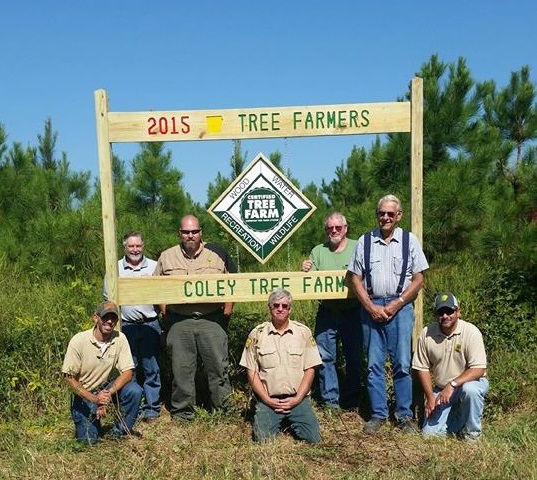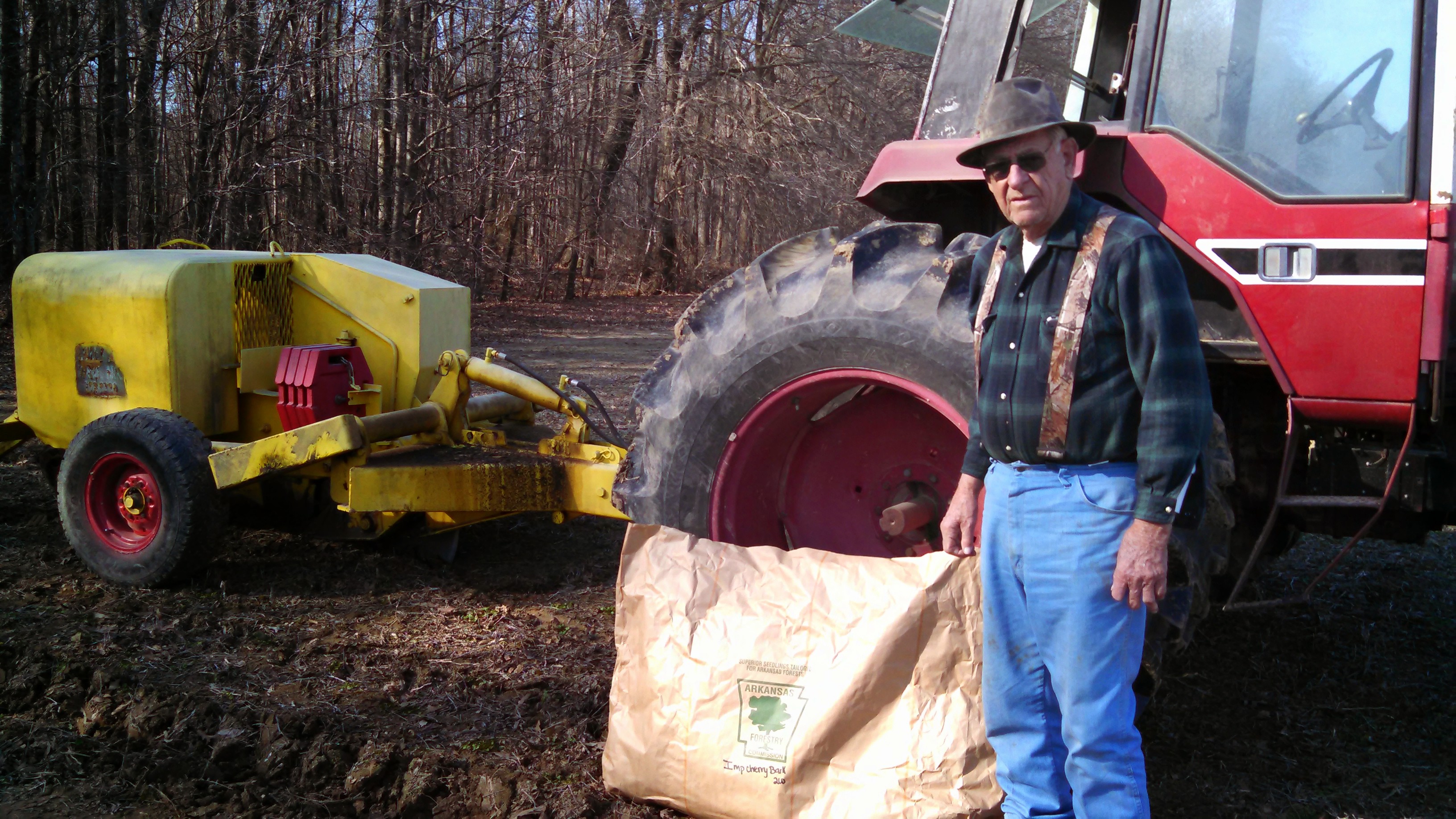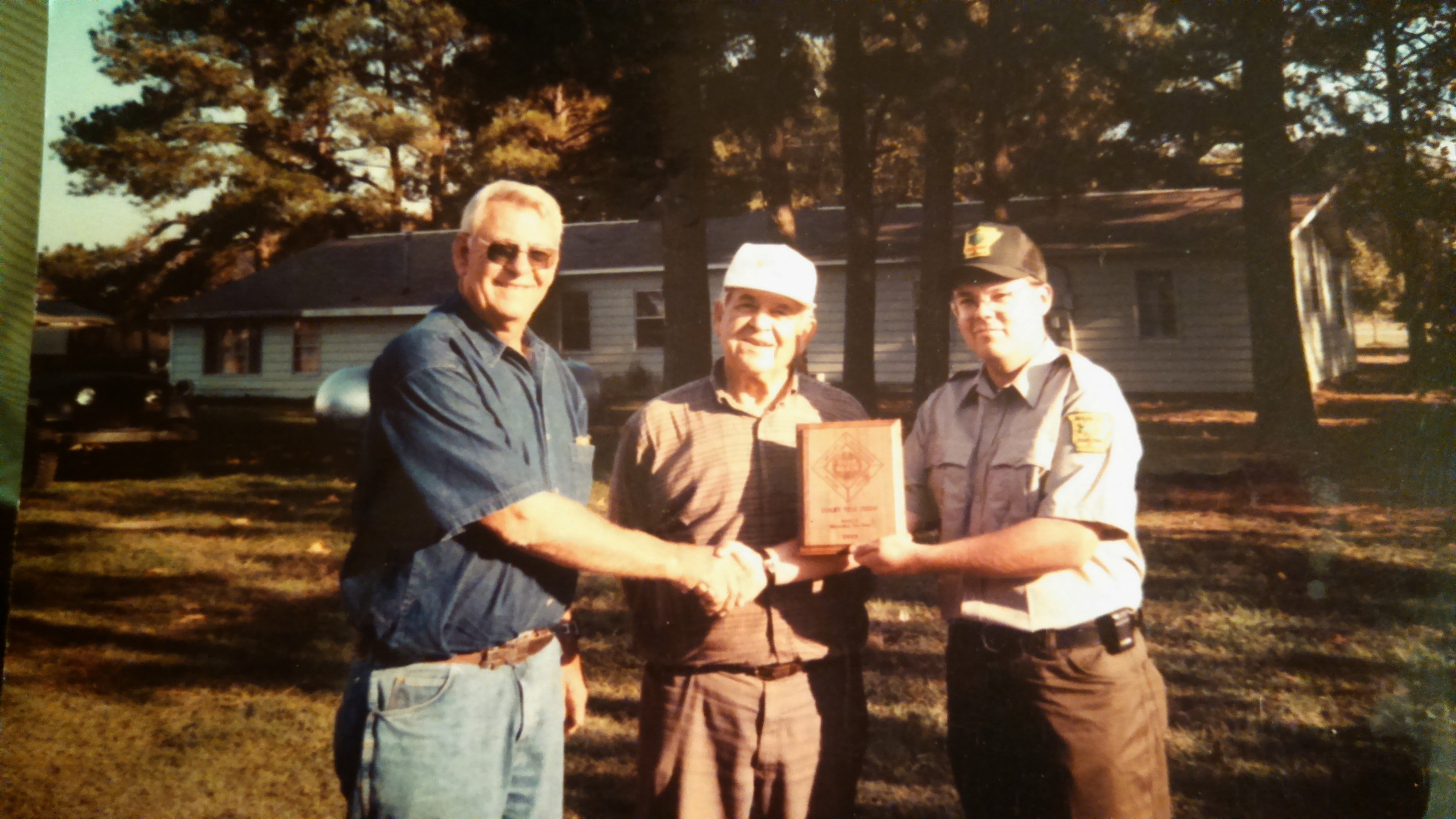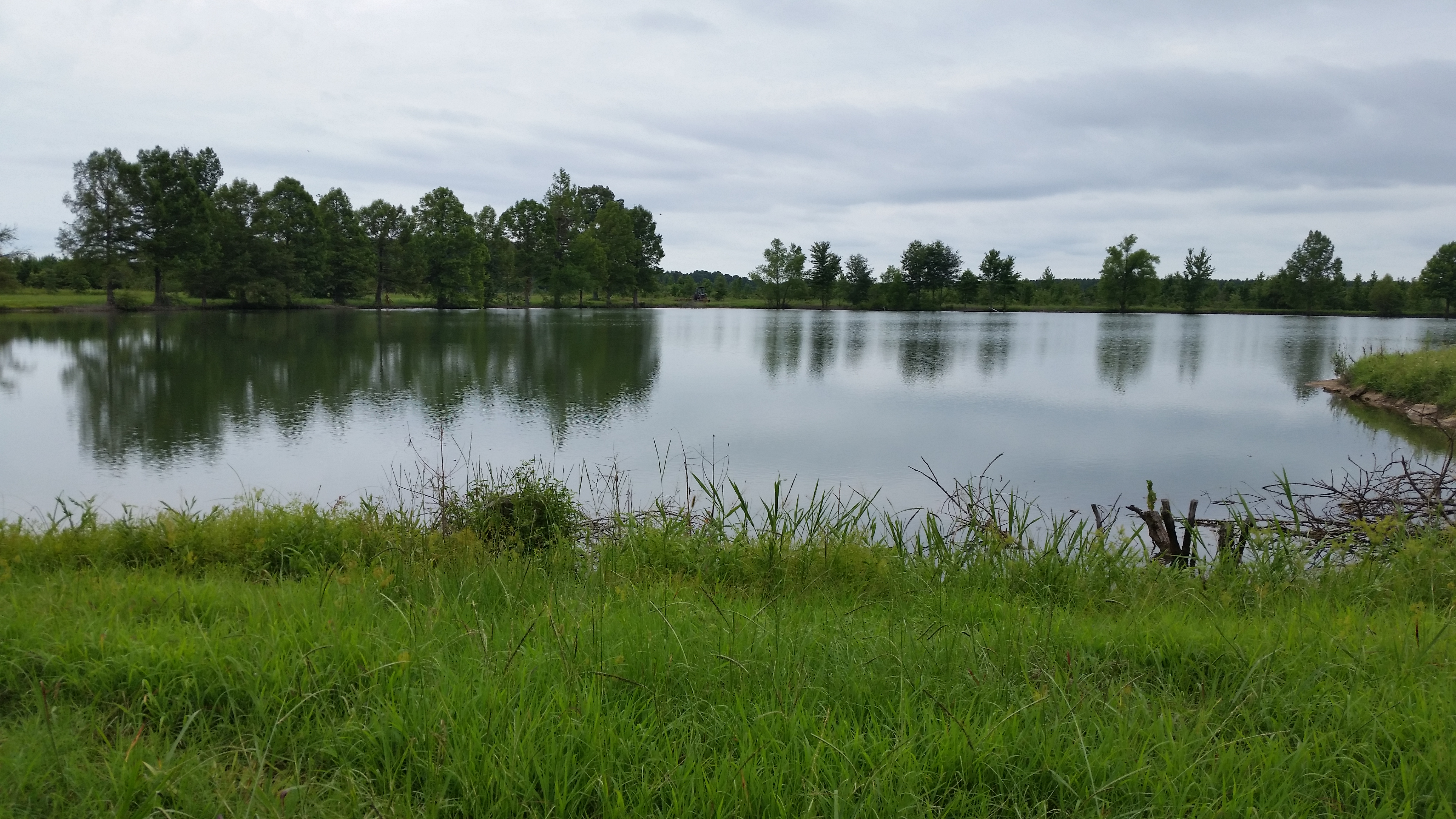Lindsey, Laudis, Kenny Coley from Arkansas

What makes them outstanding?
The objectives of the Coley’s goal are to be good stewards of the land, and to enhance their tracts which will directly benefit both forestry and wildlife. They believe in doing the right things and making the right management decisions.Their story starts in 1959 with the first acquisition of 80-acres of land in McRae, Arkansas. Since that time, Coley Bros. Farm has become active stewards in regards to forestry management. At this time there are three key players of the family trust: Lindsey Coley, Laudis Coley and Kenny Coley.Since that first initial purchase the property has grown to a total of 750-acres and has been an official tree farm since 1988 as the American Tree Farm System sign is proudly displayed on Highway 367 South. The majority farm is in plantation loblolly and there is some acreage in Bottomland Hardwoods, with some new pine and hardwood plantings found throughout the property. The property also contains several ponds and water sources along with the many recreational benefits that are often used by many family members. During that 56-years of growth there were some highs and lows as there were a lot of changes economically and many struggles were common place especially during the 80s for 80s the Coley’s. They have persevered through these tough times and never neglected or strayed away from their forest management goals as they would always serve as good stewards as the entire farm remained intact.The Coley’s are true believers in protecting water, soil and doing the right things towards sound forest management and this will always be part of the legacy of Coley Bros. Farm. This tradition will continue for several years as most of the family lives on the property enjoying being part of an Arkansas gem found in White County, Arkansas.With that being said, the Coley’s goal is to be a good stewards of the land, and to enhance his tract that will benefit both forestry and wildlife.
Tree Farmer Story

Laudis and Lindsey Coley and their families began acquiring land in 1959. They planted the acreage in row crops, which was common for that time period. The landscape and demand changed in the 1980s, providing opportunity to enjoy lean years of harvest and begin participation with the CRP Program. The land was thereby changed from growing crops to trees. Initially, the Coley family purchased tree planters and began planting on their personal land, as well as on public land. Tree farming was very new to the Coley’s, and they learned early to ask for help and assistance in identifying best practices for generating income and producing healthy, sustainable trees in White County. As the years passed, and the trees and families grew, the Coley farm became the first Stewardship Forest in Arkansas. With support from the Arkansas Forestry Association, local neighbors and friends, and elected officials in White County, the Coley farm saw great growth and success. The Coley’s hope to leave a legacy of hard work,dedication to the land and sustainable growth, and the rich pride taken for so many years now in watching the trees grow, and the land change along with them.They have worked to care for the water and soil on the property, understanding that this relationship is an interconnected circle. They have been dedicated to tying best management practices for water, soil, and tree care into public presentations and training events – highlighting for friends, neighbors, and co-farmers that the benefit of hard work on one farm can benefit the land all around you, and downstream from you, and can affect many generations after you.

Currently the land use is divided between planted loblolly pines, mixed pine hardwoods, bottomland hardwoods, planted hardwoods, wildlife openings, and a dove field.A road and fire lane system is maintained throughout the property to divide the various timber stands and also provide access. Loblolly pine stands have been selectively thinned as needed. Prescribed burning activities are conducted on a two to three year rotation and herbicides have been used to control undesirable competition and to enhance wildlife habitat.Hardwoods stands are still excluded from harvesting in order to serve as a SMZ against erosion. These SMZ’s consist of good mast producing trees along creek and river bottoms and drainage ditches throughout the property, which provide cover, travel corridors, roosting sites, and winter food source for wildlife.Several acres of wildlife food plots are planted and maintained annually. Hard and soft mast producing trees have been planted throughout the property to provide an additional food source for wildlife.
Mr. Newman plants a field with sunflowers, sesame, and corn which is used for dove hunting. Wood duck boxes and bluebird boxes were constructed and placed in strategic areas. Several miles of forest trails are maintained and used for hiking. Also a pavilion has been built to be used as a picnic area for family gatherings. The pavilion offers a beautiful view of the Pea River.Mike and Joan take pleasure in sharing their property with others. They invite landowners to visit their property to observe forest management activities and learn how to implement them. They hosted the 2014 South Alabama Regional Forestry Field Day. Local Boy Scout troops visit the property to earn forestry related merit badges. Boy Scouts also attend a camporee on the Pea River. Mr. Newman hosts the First Baptist Church father/son camp out and youth Sunday school class on the Pea River. He also sponsors youth deer and turkey hunts. At least 11 youngsters have harvested their first deer on the Newman’s property. Two young hunters have also harvested their first turkeys. As a fundraising event, the Wiregrass United Way auctions a deer hunting trip to the Newman’s property. They hosted a Texas A & M style bonfire for helicopter flight students stationed at Fort Rucker Military Base. Mike often states, “Nobody owns the land except God, we are all just caretakers to pass it down- hopefully in better shape than we received it.”Since the Newman’s purchased their property, they have endured 3 floods (most recently Christmas 2015) and 2 major hurricanes. But these natural disasters have not discouraged Mike and Joan.The excellent condition of the Newman property reflects the many hours of planning and hard work put in by them. Mike and Joan’s efforts have led to their property being certified as a State of Alabama Treasure Forest, certified Stewardship Forest, and certified Tree Farm. Their property was Coffee County’s 2007 Forestry Farm City winner.As the 2014 Alabama Tree Farmers of the Year, Mike and Joan are shining examples of who Tree Farmers are, and are ideal candidates for ATFS National Tree Farmers of the Year.

Wood
This past planting season, the Coley’s machine planted 103-Acres of Improved Cherrybark along with American Persimmon, Sawtooth Oak, and approximately 7.0-Acres of Water Oak. Prior to the planting, the Coley’s site prepared the acreage where the stand was site prepped sprayed and then mechanically ripped to ensure good survival and stocking.Most of the pine timber found on Coley Farm Trust is currently leased by Rayonier Forest Products and is scheduled to be clearcut very soon. After the harvesting has been completed, the surface rights will revert back to the Coley Farm Trust where they will begin the task of replanting the stands with genetically modified loblolly seedlings.The Coley’s are very knowledgeable in regards to implementing Arkansas Best Management Practices (BMP’s). They have built several access roads throughout the property and have also maintained these roads through the use of water bars and road-side diversions in order to decrease erosion problems especially during harvesting operations.They are also knowledgeable in the use of prescribed burning and has conducted several burns throughout the property in which they have their own dozer and have constructed their own firebreaks that exceed Best Management Practices.In the natural hardwood stands, the Coleys have always incorporated good wildlife and forest management practices by the use of chemical injection in which they also implement themselves.
Water
The water sources that are found on the Coley property, both streams and ponds are extremely important and are protected areas. Streamside Management Zones (SMZs) are established throughout the tract and crossings are especially limited.There are also some ponds found throughout the property and it is common to find Kenny and his dad, Lindsay catching a live well full of bass and crappie on a spring afternoon. However, in order to maintain the integrity of these hidden gems, buffers have been mapped out to protect them from any type of soil intrusion.
Wildlife
Wildlife is very important to the Coley’s and this at the top of their objectives. They have several acres of food plots with a variety of native plantings, watering holes for wildlife have been installed for the dry season, established field borders around the food plots for transitional cover, and the plots are always providing for wildlife.For recreation, the Coley’s are avid hunters and they use the land to hunt mostly white-tailed deer. During the 2014 Arkansas Deer Season, Kenny Coley harvested two bucks and had seen several does throughout the deer season. Forest management and wildlife habitat diversity complements each other and therefore the Coley’s have this in mind all the time through the use of wildlife food plots and the planting of artificially regenerated hardwoods.
Recreation
The Coley’s all live near each other on the property and aesthetics are a big part of their plan. Some of their property borders Arkansas State Highway 367 South which gets a considerable amount of traffic. Roadside buffers and thinning schemes (disguising down-rows during the plantation thinning) are incorporated to maintain a good public appearance.Recreational benefits are very plentiful and can be found throughout several of the tracts by the ways of forest trails, ponds, and wildlife food plots. These opportunities are maintained and management objectives are made with these opportunities in mind and are given careful consideration prior to the implementation of forestry and wildlife practices.


